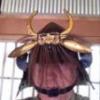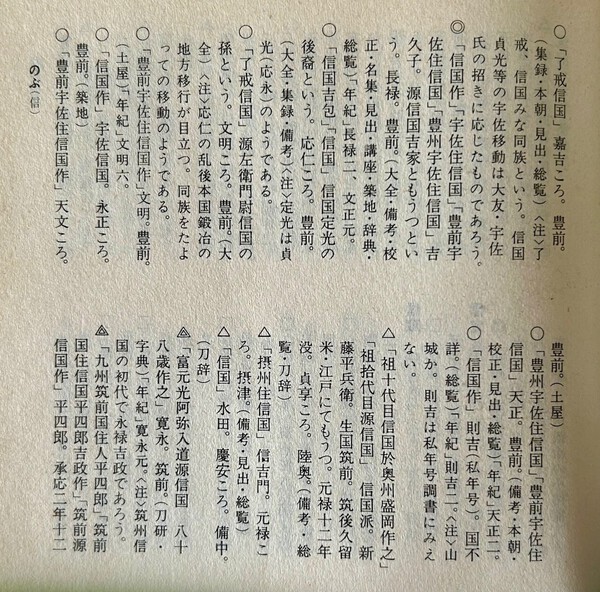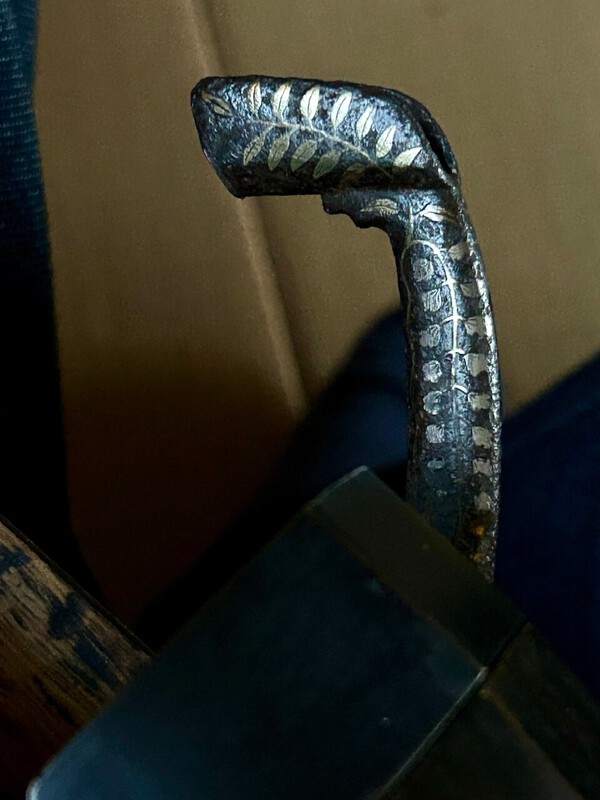-
Posts
14,272 -
Joined
-
Last visited
-
Days Won
275
Content Type
Profiles
Forums
Events
Store
Downloads
Gallery
Everything posted by Bugyotsuji
-
I do occasionally see a small bag or bunch of spare parts for Tanegashima, maybe once a year on average. Since these guns are not all of a standard size, Dale, and their construction and proportions vary by region, you can easily end up with a result looking slightly out of balance. An overlarge serpentine, for example. I know others are looking for parts too. I would look to have parts made up, but I am guessing you think that could be expensive.(?) Tomorrow I hope to be collecting one with a newly-made pan cover, but I know the guy and he won’t rip me off. I’ve given him spare parts in the past, so there’s an element of give-and-take. Hoping someone can help you out. And. Please let us know how you get on! Good luck.
-
https://nqs.takaebi.sa.com/index.php?main_page=product_info&products_id=19442 Your Fuchi could be the same Meiji Kinkō artist 篤明 as in the link above.
-
The top one might be kata-or tan- udenuki no Ana, 片 or 短腕抜きの穴 perhaps, but the lower tsuba to me is more like sun/moon or tentai 天体 透sukashi. I would be interested to hear other possibilities! (Nice finds!)
-

How accurate is this certificate ?
Bugyotsuji replied to Bosco's topic in General Nihonto Related Discussion
-

How accurate is this certificate ?
Bugyotsuji replied to Bosco's topic in General Nihonto Related Discussion
(The old papers suggested Tensho, as Steve says.) Good luck and happy hunting. With such a regional, even local blade, I agree that there was probably no benefit to anyone by adding a gimei to it, as you say. -

How accurate is this certificate ?
Bugyotsuji replied to Bosco's topic in General Nihonto Related Discussion
Minh, it's just his opinion, and he is 'treating it as...', which is a temporary position just to be on the safe side. Green papers were often correct, but often wrong, so their track record is not so good compared to more modern paperwork. Anyway, it is safer to assume a measure of doubt with anything, but keep collecting information in the meantime! -

altered and modernized tanegashima.
Bugyotsuji replied to Peter Bleed's topic in Tanegashima / Teppo / Hinawajū
Hi Jon, and apologies to Peter on his thread, for the quick answer, imagine the strength of the desire to update at that time. They were under pressure from all sides, and hearing rumours or seeing armed groups with new-fangled firearms, willing to try anything, which accounts for every combination that started to appear. These were crossover times. Any kind of bridge that will get you to the other bank! Of course the earlier imports were smoothbore, as the matchlocks were, and barrels with rifling, true rifles only came along later. You'll find imports with butts that were cut shorter to suit the Japanese physique, and copies made from scratch (or melted down matchlocks) in Japan that were shorter overall, and various types of ignition modifications to smoothbores. Sawada in his book that Peter has, illustrates several evolutions of early pill-lock. Jan has a Bizen matchlock that had been converted to a pill lock, but the added parts were removable, so it could still be safely used as a matchlock if or when necessary. For me it is simpler to confine myself to the Golden Age of the smoothbore matchlock, 300 years from 1540 to 1840. Beyond that the mind goes crazy trying to map out all of the military developments happening as the country faced political turmoil from within and without. Perhaps someone will one day provide such a post-Tanegashima evolutionary map of late Edo and early Meiji. (I have seen two wonderful cased examples of inlaid Tanegashima matchlocks made during Meiji, each probably the swan song of an elderly gunsmith pouring out all of his inherited talent from a by-gone age.) There is a good display of much of this stuff in the new 'Token World' Museum in Nagoya if you have a chance to visit. There are floors dedicated to Nihonto and Katchu, but the firearms floor alone has about 300 guns on display, with examples of just about everything. Last year I must have posted photos here somewhere from my own visit.) -
Thank you for the detailed reply, Jon. Wow, that's quite an impressive collection you have! Have you ever been to a competition in Portugal? Quick question. The target holes look consistent. Do you have a separate-sized ball for each gun, which you have to keep track of, or have you managed to source barrels that all take the same size? Or is yours just one of these? I'm pretty sure that the cotton match cords used here in Japan do not use any added substance, relying solely on the natural oils in the plant. I do have a section of genuine old cord for static exhibition of artefacts though, which seems to be made of very thin woven threads of cedar bark, possibly. The latest batch of cord that we have nearly run through is slightly too narrow for my pistol and long gun, so I have placed some tape inside the serpentine pinch flaps as I do not want to bend them.The previous cord was woven differently, but just the right size. For the hand cannons, we have sections of a fatter cord. Thanks for the kind offer. Don't worry about me, though, as it will be someone's responsibility here to order a batch. If I find out who makes it, I'll let you know.
-
Nice timing! Great, thanks. Definitely some strong similarities there, Jean!
-

altered and modernized tanegashima.
Bugyotsuji replied to Peter Bleed's topic in Tanegashima / Teppo / Hinawajū
Hi Peter, thanks for the further clarification. Most everything you say in your first paragraph about the police and modifications still holds true. I do know one importer who has deactivations performed abroad and successfully seems to import almost anything in some quantity. He must have established a track record to do this. Matchlocks modified to percussion caps do come up regularly in auctions in Japan. To purists, they do not hold the same value as a straight untouched matchlock, so interest will thin a little, but many collectors will not be too worried by the lockwork if the decorations look good, and most dealers will be aware of that and still hopeful they can sell. Some years back while I was writing the definitive Tanegashima book with Jan, we needed a gun for the Choshu section. I had a finely inlaid matchlock which had been modified to use percussion caps, so I sent him a set of photographs. "Actually, can you source a genuine matchlock?" he asked. Now that was difficult, as most Choshu guns you find on the market today were once modified to percussion. Eventually I did find an untouched Choshu matchlock, which I still have, but it does illustrate that in the case of Choshu guns it seems that modified ones are actually more common. Modifications certainly pre-date Meiji, and were happening in different iterations from Tempo (1830s?) onwards. Pill locks came first, but percussion caps soon followed; in strong demand regionally, guns were either imported, native guns were modified, or they were specially built in Japan. -
Hi Jon, apologies for the late reply. For some reason new threads in the Tanegashima section never come up in 'All Activity', so I have to go and open up through Browse to check manually. You'll be asleep when I write this. Genuine Tanegashima pistols are relatively rare in Japan. We are the only matchlock group in Japan where every member has one, I believe. Actually some of our newer members may still be waiting to source one. Dealers tend to bump up the price if they do have one, so the question becomes how to find one at a reasonable price. It is legal to buy and own one, but it must have a registration card with it, or the transaction will be illegal, and the penalties are harsh if you are found out. This means that you would have to deregister your potential purchase for export, or find a dealer who might be willing to do this. (Some may be willing to send abroad with the paperwork still attached, although this is illegal too, but that would require a level of trust that your friend may not be able to establish on a short visit.) All things considered, and the recent lottery of laws for customs and excise baffling most UK officials, it would be safer and easier if you can find one there in the UK. (If I were ever to bring mine back to the UK it would be a challenge as to how to do it successfully.) As to cord, this is a very good question. I am running out myself, with only enough for one further display this Sunday. Yesterday I was even sewing odd leftover pieces together! We have ordered previously from a (clothes line?) supplier who treats their cord for us in some specially different process, but I don't know who they are, or whether they are still going. I will ask on Sunday. I think we ordered about 300 meters' worth last time, but that was a special order a few years ago with no guarantee of repeat business. Can you tell us where you shoot? The only blackpowder experience I have had in the UK was a fun-packed day at Bisley with a variety of old firearms.
-

Edo Period Corner Part II
Bugyotsuji replied to estcrh's topic in General Nihonto Related Discussion
Brian, for some reason I missed your inspirational answer here. I can 'see' in my mind exactly what you are saying; that will be a really great tip for next time. Although I had booked a slot at my friend's house for this coming Saturday, I actually managed the break-through yesterday morning. The wife was out so I had the house to myself, and I decided this thing was not going to defeat me. Altogether, including previous sessions, the whole effort took about six hours, but using Kure 5-56 spray, a tough wire and various pipe cleaners, from outside through the pan vent entrance, and from inside the barrel (angled sunlight showed the inner end of the channel), I started to get a blacker colour of gunge on the wire tip. It was a question of belief, as I could not be 100% sure that it had not been deliberately deactivated. Gradually I began to be able to 'see' what the tip of the wire was doing (the passageway is only one strand wide), as it scratched endlessly and then slowly began to engage; minuscule changes in the colour of what I was wiping off it became my only source of courage. But what a relief! I was dead pleased yesterday, and this morning the same feeling of relief is still with me. This matchlock (the Inatomi-Ryu long gun I was discussing in the translation section) was no more than an interesting decoration when I bought it, but it is now back to full working order. Lesson learned. Always check everything, including the vent channel; assume nothing. -
My friend tried to gve me some, but I wondered what I could use it for and hesistated too long..................
-
The back of the blade is mirror flat, with no discernable hollowing to it. As to the steel, it looks monosteel, though I am not confident as to what to look for. Is a traditional Japanese Nihonto a laminate blade? As to the handle, I had a look and it is a single section of wood, with the blade set into it. Your idea of damage and remediary binding makes sense. There seem to be three bindings, mini-pinned at each end. Interesting link. Thanks! (I think one is described as 刺身包刀 sashimi-boto, using the character 刀 instead of today's 丁 of 包丁 hocho.)
-
Tokusa (spiky) https://x.com/nano_723/status/1092986946509451264?s=46 Broader waxy leaves Mukunoki.
-
A sword collector friend in Fukuyama grows some tall spiky green stalks which he said were traditionally used as sandpaper. He cuts them into sections and lays them out to dry. I think they were hollow, with rough exteriors. I’ll see if the name corresponds with horsetail ferns, which I had thought was something different. Hmmm…
-
Thank you Aaron, for some more background information to chew on while I go back and look at it once more.
-
Ah, great illustration, Moriyama San! “We live and learn!” Many thanks.
-
Thanks Jean for the quick reply. Very interesting! Is yours pointed? I have heard of sashimi-bocho 刺身包丁(Sashimi + Hocho) but never actually used one. PS I have just found a couple of likely candidates under antiques and sashimi-bocho! Breaking new ground for me! 骨董 and 刺身包丁 タコ引き刺身包丁 maybe for cutting up octopus... ! :eek:
-
Here's a bit of a puzzle. This blade turned up at an antiques market, and the dealer insisted that it is legal. At first I thought it was one of those narrow-bladed Japanese saws, but this one has a straight edge. The blade has a sort of shinogi line on the side that is signed, and almost a kissaki, but is hira on the reverse. Quite light in the hand. Photos will follow. The Mei looks to read 正, then a disfigured spot, and finally 久 (?). It has a wooden, worm-eaten handle, bound in rattan or bamboo of some kind. There is no evidence of a mekugi, but two or three small random iron pins that seem to be for fixing the binding, and no saya. Are we looking at a woodworking tool, or something for fish, or leather, or flower ceremony perhaps? Or a part of something else? All ideas welcome, (unless they are unwelcome). Length overall 33 cm Blade length from edge of grip, 22 cm Blade width goes from 1.6 cm to 1.1 cm at tip. There is almost no kasane, at 1.0 mm, or 0.1 cm Tip Mei Kasane
-

altered and modernized tanegashima.
Bugyotsuji replied to Peter Bleed's topic in Tanegashima / Teppo / Hinawajū
Well, I cannot answer for anyone else, Peter, but these guns in various iterations do come up with some frequency. Sawada Taira has a couple of chapters in his book (in Japanese, 日本の古銃, pp136~ the end) where he introduces many modifications. They seem to have been pretty inventive in Japan as they followed the evolutions coming in from abroad, adapting their own guns in various ways. Some would be one-offs, and other more successful adaptations might have been to some extent mass-produced. -

Edo Period Corner Part II
Bugyotsuji replied to estcrh's topic in General Nihonto Related Discussion
Today a little birdie told me that the work on the guns is complete, so we will need to set up a collection day. I have one more long gun with a blocked 'himichi' vent that I may ask him to help with. I've tried just about everything I can think of, but every thickness and strength of wire gives up and bends eventually. If I could introduce an angled awl into the breech chamber... and attack the barrel rust in the vent passage from within, that could be a new angle of attack, though. -

Race across the Uji River (1180) tsuba and fuchi-kashira
Bugyotsuji replied to Jesta's topic in Tosogu
-

Race across the Uji River (1180) tsuba and fuchi-kashira
Bugyotsuji replied to Jesta's topic in Tosogu
Lovely examples, Justyn, and great background information. With his horse struggling to turn away, I can guess that Kagesue needed both hands and all his strength to pull back on the reins. Interestingly in your example he has both arms right through the bow, doubling the safety net on it. You would not want to drop your bow in the river, and the mouth is a useful third hand! https://www.yamada-shoten.com/i_item/2023/02/141840.jpg -
Here are some shots of the serpentine match cord arm, and a Fuji vine pulling two strong bamboo together. External side Barrel side Power of Fuji wisteria vines, taken during a climb up the mound of a ruined castle nearby. And…
















